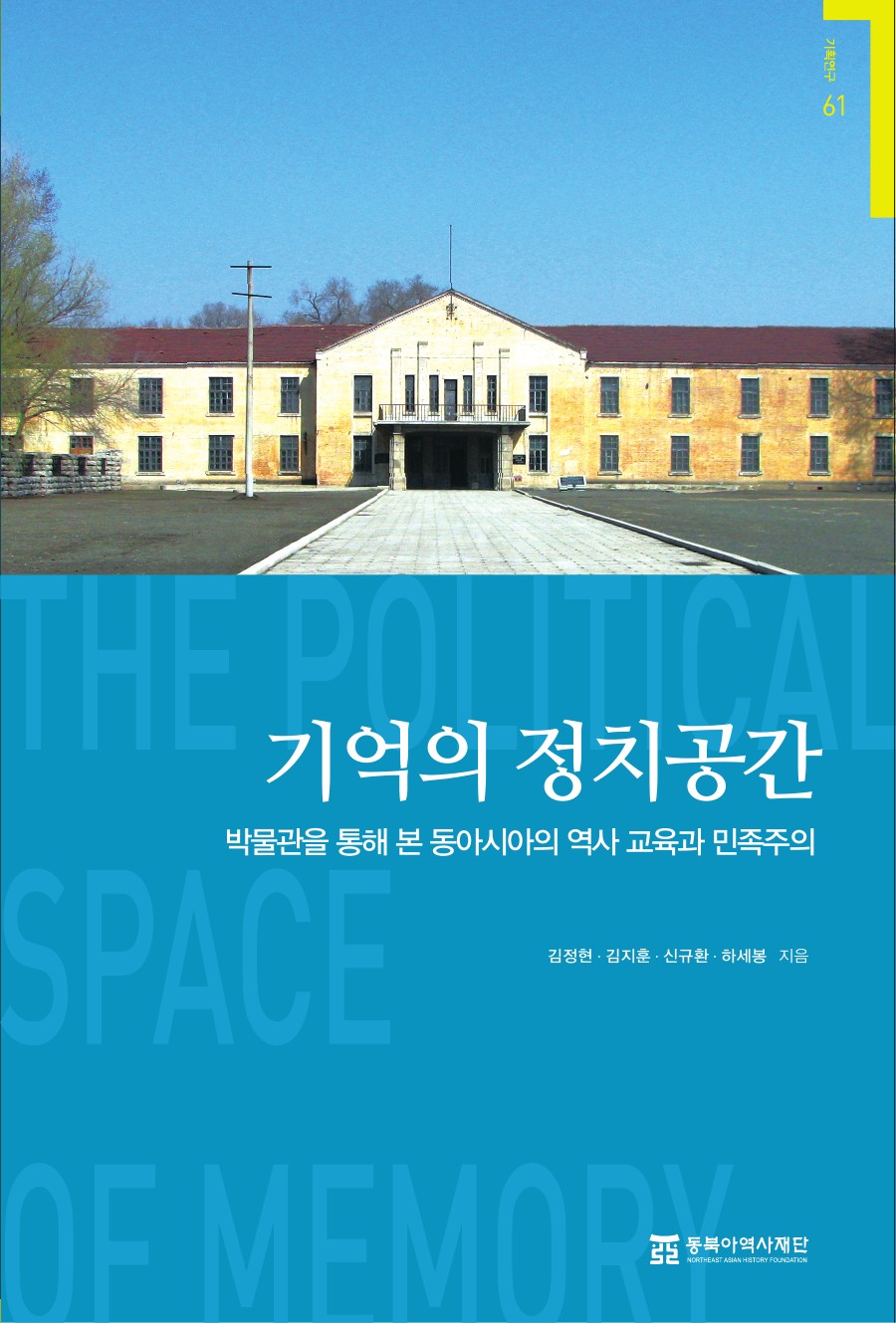Publication
- Date2015.03.27
- Hit1198

1. All rights reserved by the Northeast Asian History Foundation
2. No part of the files on this website may be reproduced and/or copied in any way, shape, or form without permission.
Title: The Political Space of Memory: History Education and Nationalism in East Asia through Museums
金正贤、金志勋、辛圭焕、河世风 著
Northeast Asian History Foundation | 225*152mm (A5 New) | 252 pages | KRW 12,000 | July 25, 2014
ISBN 978-89-6187-333-8 93910
While the Korean, Chinese, and Japanese economies are becoming increasingly interdependent, the nationalistic conflict in East Asia is also intensifying due to Japan’s heavy rightward shift in politics and diplomacy. As popular nationalism and patriotism heighten and clash in East Asia, what views and positions can Korean hold on to?
This book examines history education and nationalism in East Asia through museums. Analysis of the National Museum of China provides basic material with which to diagnose the influence of the Chinese government’s policies consequential to China’s heightening Sino-centered nationalism. The Unit 731 Museum demonstrates that historical facts are not simply remembered by the victims alone, but are still being used to this day by the perpetrator as ‘historical culture’ for political purposes.
Also, the exhibition of East Asian history, notably in the Kyushu National Museum of Japan, has been analyzed to find clues as to how museums in Korea should exhibit others (East Asia) in order to maintain peace in the region.
Contents
Preface 11
The Memory of Biological Warfare and New Directions for China’s Construction of Patriotism Education| SHIN Kyu-hwan
Focusing on the Exhibition of Proof of Crimes Committed by Unit 731, Japanese Invaders of China
I. Introduction 119
II. Process of the Unit 731 Museum’s Construction 124
III. Organization and Activities of the Unit 731 Development Management Committee 130
IV. Patriotic Narrative and Organization of Exhibition Content 133
1. Biological Warfare Exhibition Room 137
2. Chemical Warfare Exhibition Room 145
3. Central Hall 149
4. Exhibition of a Chinese Mother Who Took Care of Japanese Orphans 150
V. Conclusion 151
China’s Memory and Commemoration of the ‘War to Resist U.S. Aggression and Aid Korea’ | KIM Jung-hyun
Focusing on the Museum of the 'War to Resist U.S. Aggression and Aid Korea' and the Patriotic Martyrs’ Cemetery
I. Introduction 159
II. Exhibitions and Descriptions of the Museum of the 'War to Resist U.S. Aggression and Aid Korea' 163
1. Construction of the Museum and its Exhibition Principles 163
2. Description of the 'War to Resist U.S. Aggression and Aid Korea' as an Official Memory 170
III. Campaign to Resist U.S. Aggression and Aid Korea and Memorial Activities 184
1. Patriotism and the Campaign to Resist U.S. Aggression and Aid Korea 184
2. Heroism and the Patriotic Martyrs’ Cemetery 187
IV. Conclusion 193
Contemporary China’s Exploration of the ‘Road to Revival’ | KIM Ji-hoon
Focusing on the National Museum of China’s Exhibitions on Modern Chinese History
I. Introduction 25
II. The National Museum of China and the “Road to Revival” Exhibition 28
1. From the Preparation Department for the National History Museum to the Establishment of the National Museum of China 28
2. ”Road to Revival” Exhibition 31
III. Part 1 of “Road to Revival”: Exhibit of Modern China 38
1. China and the World before the Opium Wars 38
2. Invasion of China by the Powers 44
3. China’s Awakening 60
IV. Conclusion 67
Construction of the Nanjing Massacre Memorial Hall and Education on Patriotism and Peace | KIM Jung-hyun
I. Introduction 77
II. The Nanjing Massacre Controversy and the Memorial Hall’s Construction 79
1. The Nanjing Massacre Controversy 79
2. Construction and Development of the Nanjing Massacre Memorial Hall 85
III. Expansion of the Nanjing Massacre Memorial Hall and Education on Patriotism and Peace 89
1. Emergence of Denial toward the Nanjing Massacre and the Expanded New Wing 89
2. Patriotism Education at the Memorial Hall 101
3. Peace Activities and Peace Education at the Memorial Hall 105
IV. Conclusion 109
Exhibit of East Asian History in Museums | HA Se-bong
The Case of the Kyushu National Museum
I. National Museums and Perspectives of Analysis 203
II. National History, Regional History, Local History, and Museums 207
III. Cultural Exchange Exhibition Room: ’Route in the Sea, Asia’s Passageway ‘ 214
IV. Absence and Omission 232
V. Conclusion 241
Index 245
